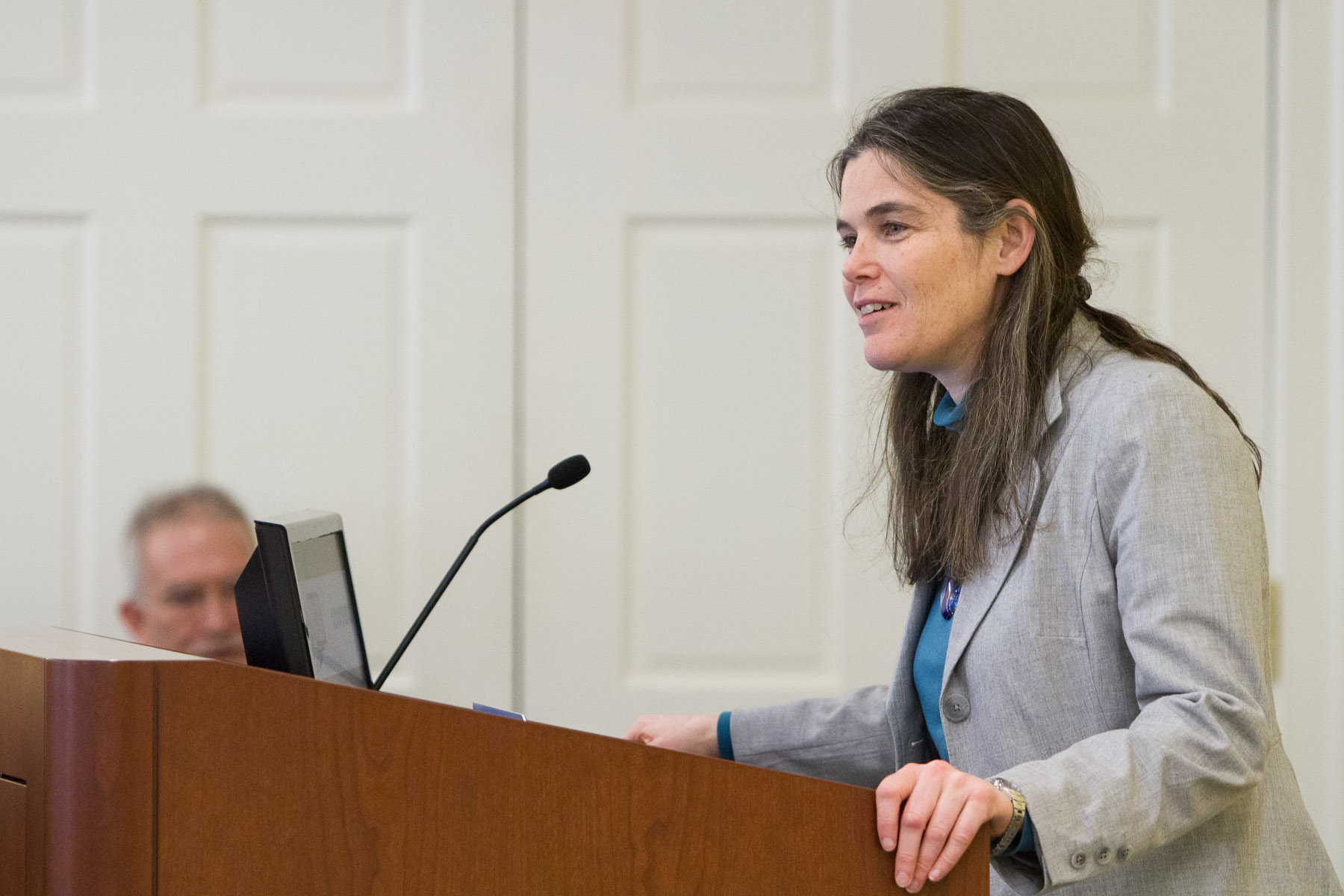Revolutions normally bring to mind weapons and death, struggles and victories. One way of life is dramatically impacted forever.
Today’s revolution in higher education is calculated in clicks of a mouse and electronic quizzes, but with similar effect. It is virtual and touches people worldwide, giving life to hopes of an education.
Daphne Koller – a computer science professor at Stanford University and the co-founder and co-CEO of Coursera – visited the University of Virginia on Wednesday to share her thoughts about the online education revolution.
Just 10 months after its launch, Coursera, a social entrepreneurship company funded by two venture capitalists, provides “massive open online courses,” or MOOCs, to approximately 2.7 million students from 196 countries. They are taught by faculty members at 33 top universities across the U.S., including U.Va., which launched its first MOOCs in January.
The company states that its goal is to “offer quality online education at a marginal cost for each student.” It is making significant progress; Wednesday night, Coursera announced a massive expansion to double the universities providing classes, including institutions in France, Spain, Italy and Hong Kong. Currently, Coursera offers just three classes in French; more language options will now be available as international universities come online.
Koller spoke to a standing-room-only crowd at the Curry School of Education’s Bavaro Hall about the beginning of Coursera. It was birthed, she said, out of a hope she shared with co-founder Andrew Ng to better the world based on the foundational belief that education should not be a “privilege [granted to] the few, but a basic human right.”
The first Coursera pilot courses were three Stanford computer science classes, which on campus enrolled an average of about 400 students. Online, the classes drew 104,000 students who might never have been able to attend Stanford.
Koller said that higher education is increasingly unaffordable, even for Americans. In other parts of the globe, due to limited access of education, some families are “choosing between feeding their family and going to college.” Coursera, she said, believes that online learning can touch every area facing an education desert.
The company is founded on three pillars, she said.
First, video content consists of lectures that present the bulk of content in new, innovative ways. Many professors are experimenting with bringing the content to life, perhaps by filming on site at historical landmarks or by interviewing policy experts in their offices.
“What we are finding,“ Koller said, “is that the instructors are learning more about their content than ever before, and students are asking different questions” than are normally asked in a physical classroom.
These videos offer a personalized learning experience, allowing students to pause, rewind and fast-forward. There is preparatory and optional content meeting the needs of those who need additional help and for those that overachieve.
The segments are short, only 5 to 10 minutes, and contain questions that pause the video and require the student to input an answer before returning to the lecture.
“Students are constantly engaging with content. Every single student has to answer the questions that pop up,” Koller said, noting that in a lecture hall, the instructor is often wondering whether the students are engaging and retaining the knowledge. This interactivity with the content allows everyone to participate and gives the instructor guidance on how and sometimes why many students get the information wrong.
Coursera’s second pillar is practice and mastery. The system automatically grades online quizzes and supplies immediate feedback, which research has shown incentivizes students to continue their efforts until they have grasped the content. “Mastery actually happens more quickly,” Koller said. “For students of similar current performance, mastery-based score improvements correlate with future performance.”
Longer projects that require a human eye to grade are evaluated through peer grading, using a rubric meticulously created by the instructor. This has proven, according to Koller, to further enhance student’s retention by learning from peers.
The last pillar is community. Both virtual and physical groups have formed organically across country borders and continents, Koller said. Counter-intuitively, “It is better to have more students than fewer,” she said. “Students help each other. Response time and quality of response is actually improved.”
At the completion of the course, students currently receive a certificate of completion. Coursera is exploring ways to provide course credit through the American Council on Education, Koller said.
For students pursuing a degree, the university bestowing a degree will have to ultimately determine if MOOC certificates can transfer for university credit. This would, however, require the student to have their identity verified to prove legitimacy, a service that Coursera can offer for a fee.
At this time, Coursera offers five classes that have been approved for college credit.
With online learning options growing by the day and rival companies already in the field, what makes a Coursera MOOC different?
“Some online classes provide static content. We try to provide a comparable class experience, at scale, to an on-campus class,” Koller said. “There is homework to do, and grades given out weekly. If you don’t do the work, you don’t pass.”
Coursera’s management is learning how students best learn, Koller said, and this, she believes, will radically change how instructors teach in the classroom and online. “Changing the way we teach in the classroom can improve learning for our students who we are privileged to have on campus,” she said.
Setting up a MOOC can be labor-intensive, and Coursera is still trying to find the win-win balance between improved student learning and improved faculty productivity. Koller acknowledged that “MOOCs are a new frontier; there are tradeoffs.”
The biggest question is the great unknown, Koller said: “How will the ecosystem of education shake out with the availability of quality content online? How [does an educational institution] balance the cost and the quality?”
Media Contact
Article Information
February 21, 2013
/content/coursera-co-founder-reports-first-10-months-educational-revolution

